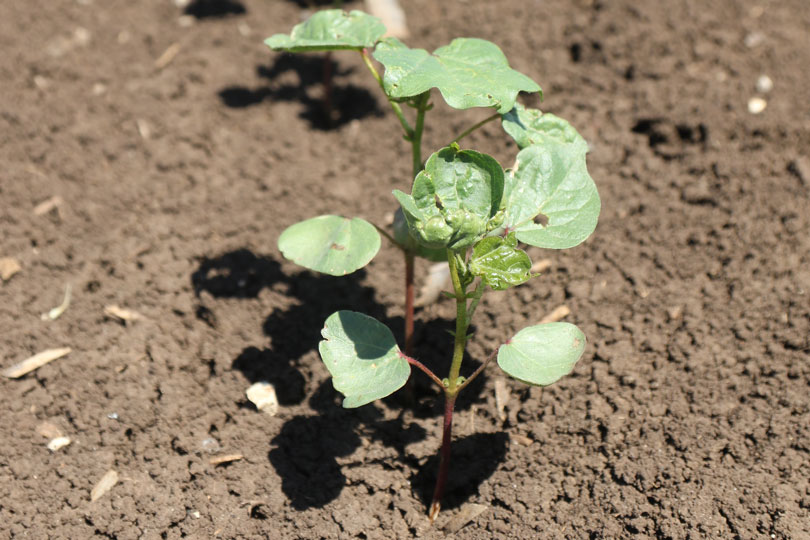By Jennifer Dorsett
Field Editor
Spring weather is often unpredictable, and this year is no different. While cold fronts and rain delayed cotton planting by about a week, farmers across the Rio Grande Valley (RGV) planted nearly 200,000 acres of cotton since mid-March.
That doesn’t mean they can breathe a sigh of relief just yet, though. Concerns about pests, water availability and market volatility are on the minds of many.
Thrips, red spider mites and cotton fleahoppers have been identified sporadically in fields, so Texas A&M AgriLife Extension specialists urge farmers to be vigilant and treat crops as necessary. AgriLife Extension IPM Specialist Danielle Sekula also told Southwest Farm Press more than 5,000 acres had been treated for boll weevils in the RGV.
Thrips feed on seedlings and attack leaves, leaf buds and the squares, or flower buds, of the cotton plant. Red spider mites can interfere with plant growth, while fleahopper infestations can cause poor boll set and reduce yields, though this risk is minimized after first bloom.
RGV cotton farmers’ are also worried about the continued dry conditions forecast for the area. The National Weather Service’s three-month outlook shows temperatures are likely to be above-average for May through July.
“The million-dollar question is whether the drought will break or not,” Brady Taubert, who farms in Cameron County, said. “The La Niña weather pattern makes us abnormally warm and dry down here, and the weather forecasters say that won’t break until maybe July. We don’t really want big rains in July. We need them earlier when the cotton plant is actively growing.”
Taubert said current circumstances this early in the season—dry days and high wind speeds—make it tough to keep a positive outlook.
Brian Jones, who grows cotton in Hidalgo County, agrees.
“We have cotton in the irrigated areas up and growing and showing small squaring,” Jones said. “The cotton that is irrigated looks pretty good, but dryland cotton down here is really poor. The dryland situation is really bad. It’s just a tale of two different fields.”
Taubert and Jones both said several thousand acres of cotton planted across the RGV had been released from insurance contracts because the crops didn’t make. Insurers will not insure crops that fail to come up. The cotton planting deadline for the Lower Rio Grande Valley was April 1.
Jones said the eastern portion of the RGV—Cameron and Willacy counties—normally receive better early season rains and have the potential to get enough moisture in the winter to get their crops up and growing well. But the western part of the Valley, which consists of Hidalgo and Starr counties, usually relies almost exclusively on crop irrigation and receives less rainfall.
But this year, the opposite is true.
“The weather pattern has been somewhat reversed this year,” Jones said. “And all indications say the drought is going to continue and the drought map just continues to grow. We’re definitely out of our normal ‘rainy’ season until mid-June. We’re looking at 45 to 60 days out before we would normally pick up any rainfall, and that’s ‘too little, too late’ for these dryland farmers.”
Although the proposed Chinese tariff announcement caused an initial sharp drop in cotton futures, the trade dispute between the U.S. and China is not expected to impact 2018 cotton prices as badly as other crops.
In Cotton Inc.’s monthly economic letter, the organization noted Chinese tariffs on cotton would not have as much of a price impact on U.S. exports as it might have several years ago, because China has sharply reduced cotton imports from all origins in recent years.
The group said cotton exporters should not underestimate the importance of China as a customer, though.
“Prices are looking up som

